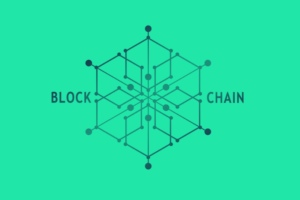Banks usually favour large-scale entrepreneurs who can provide them with a large share of their profits through interest. And the banks are uninterested in small businesses that have no collateral. However, there are other ways to access financing for your business and bank loans aren’t the only solution. In this article we will review the best alternative ways to start and finance your business.
Once you have come up with the best business idea, you can start building your online business. The most serious part of a business-building process is to secure financing. The most convenient way to finance your business is to apply for a bank loan. But, if it’s not an option for you, there are good alternatives to bank loans.
1. Crowdfunding
Crowdfunding is a way for businesses, individuals, or causes to raise money by asking the public to donate small amounts. The collective of donations is referred to as the “crowd” and generally comes from people who share an interest or affinity with the cause.
Crowdfunding is often associated with online platforms that facilitate the collection and distribution of funds, such as Kickstarter or GoFundMe. After you create a page on one of these platforms, you can collect donations from people worldwide.
There 4 main types of crowdfunding:
1.1. Equity Crowdfunding
You could get the funding you need to start your own business using equity crowdfunding. You can offer potential investors a stake in your company—and gain funding for your company—by posting information about your idea on an online platform and appealing to potential investors.
You can attract capital for your business on online platforms that offer equity crowdfunding:
1.2. Rewards-Based Crowdfunding
Rewards-based crowdfunding is the process of donating to a project or business in return for a non-financial reward, such as goods or services. The donation can be monetary or in-kind. Rewards-based crowdfunding allows people and companies to secure investment before even starting their business or launching a product through pre-orders.
Such crowdfunding is offered on these online platforms:
1.3. Peer-To-Peer Crowdfunding
Peer-To-Peer crowdlending allows entrepreneurs to borrow money directly from individuals who are ready to lend. Lenders bid for loans by offering interest rates they’re willing to accept in exchange for the funds they’re lending out. Internet-based platforms are used to match lenders with borrowers.
Sites offering peer-to-peer crowdfunding:
1.4. Donation Crowdfunding
Donation crowdfunding is when a person or a company calls on the community to donate money. Crowdfunding can support a new music hall for a school or help people who were hit by a recent disaster. People who make donations in crowdfunding never get anything back except knowing they helped out.
Local communities may want to support local businesses because they create new jobs and provide services needed by community members.
The most prominent platforms offering donations are Just Giving and GoFundMe.
2. Savings
Take a look at your financial situation to see if you have enough savings to cover the startup costs for your business. If you do, you can use those savings to fund your business.
Tips on how to save money
1. If you haven’t been saving, don’t worry. It’s not too late to start. Open up a new account and aim to put away $50 or $100 each month—starting now, even if you haven’t saved any money at all yet.
2. Starting with $50/month, it will take you 2 years to accumulate $1,200 of savings (which is a good minimum amount). Starting with $100/month, it will only take 1 year.
3. Try setting aside $50 or $100 before the money hits your checking account. The goal is to set aside enough money so that you can live on what’s left over (or close enough) and put some money in the bank for your business each month.
If you have savings that could be used for a business, you should consider how long it will take for those funds to run out and start generating revenue. The longer it takes, the more likely your business will fail before you can generate enough income to support yourself and pay back the debt.
You also need to consider whether or not it would be possible to get funding from another source if needed.
With all this in mind, decide whether or not it’s a good idea to finance your business with savings.
3. Loan From Family Members Or Friends
Consider asking a family member or friend for a loan. It’s often easier to get a loan from someone you know than from a bank or other financial institution.
When borrowing from your family or friends, follow some simple rules:
- Always be professional with your family or friends. Treat them like you would any other lender: keep them informed about everything related to your business and always make time for their questions or concerns.
- Set realistic expectations for repayment by considering all of the variables: interest rates, the amount borrowed, the time frame for repayment etc.
- Be prepared for setbacks: even though you might have done everything right in preparing for your loan, there may still be unexpected obstacles along the way that affect how quickly you can repay it. It’s better to set realistic expectations than over-promise yourself and get discouraged when nothing goes as planned.
4. Financing From Community Development Finance Institutions
Community development finance institutions (CDFIs) are social enterprises lending to businesses and individuals on low incomes who are struggling to access mainstream credit. Most offer some financial education, as well as budget and debt advice.
By definition, all CDFIs must be “independent from government,” which means they have a board of directors and key staff who manage their activities. They use the money they lend for social good, not for profit.
Who do CDFIs lend to? You may have seen adverts for payday loans or short-term credit products that promise instant cash. These loans are often expensive and can cause people more problems than they solve by leaving them in debt for longer than they expected. CDFIs tackle this problem by providing affordable credit and support to borrowers who need it most. Borrowers must also meet specific criteria based on their income, location, and type of business.
5. Business Grants
A grant is a payment you receive from a government or non-profit organization for a specific purpose.
Unlike loans, grants don’t have to be paid back. The grant money is not borrowed. There is no interest attached. Grants are given to businesses with no expectation of a return on investment.
In the United States, business owners or business founders may apply for the following grants:
- Small business funding
- Start-up business capital
- Home business assistance
- Women-owned business funding
- Small Business loans
- Minority-owned business funding.
You may find more on the website GovernmentGrants (note that this website is not managed by a government agency and is not affiliated with the US Government).
6. Asset Financing
Asset financing is faster than a traditional loan because it does not require many documentation steps. However, asset financing may not be the best option if you need working capital for long-term growth.
This type of financing can be divided into 2 basic types:
- those that help you buy or lease assets, and
- those that help unlock the value of things you’ve already got.
In the first category, we consider things like hire purchase (where you eventually buy the asset outright), and equipment leasing (where you pay to rent the asset from a lender).
The second category, Refinancing an asset is one way to get financing. It is the process of borrowing money against something you own, such as a piece of machinery. This method allows a company to free up cash that is tied up in assets and gives it quick access to funds.
___________________
Images from Pixabay.




